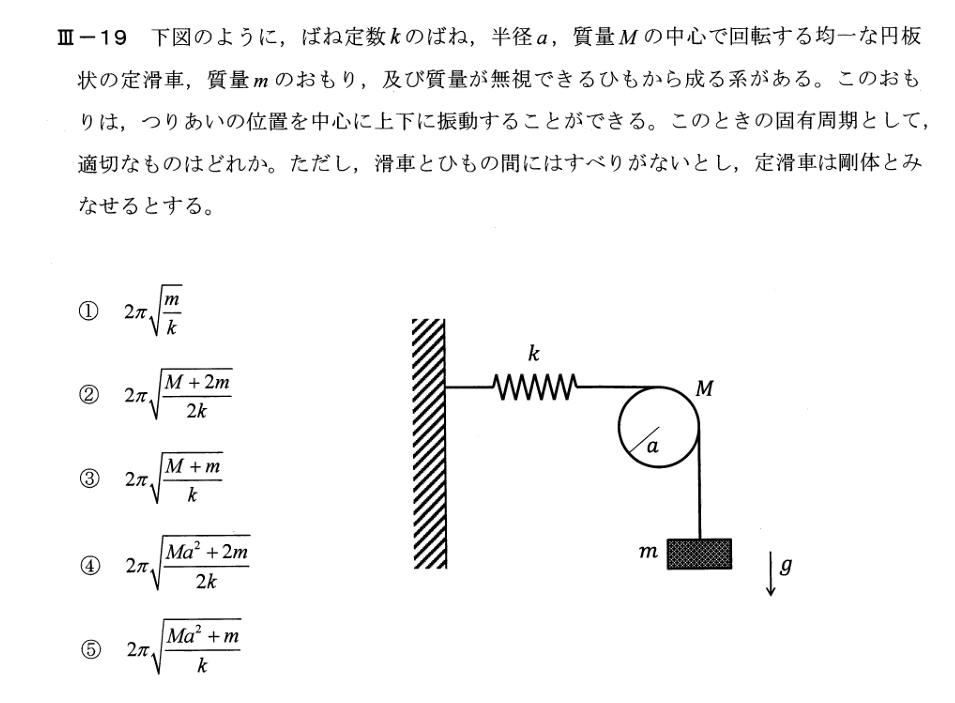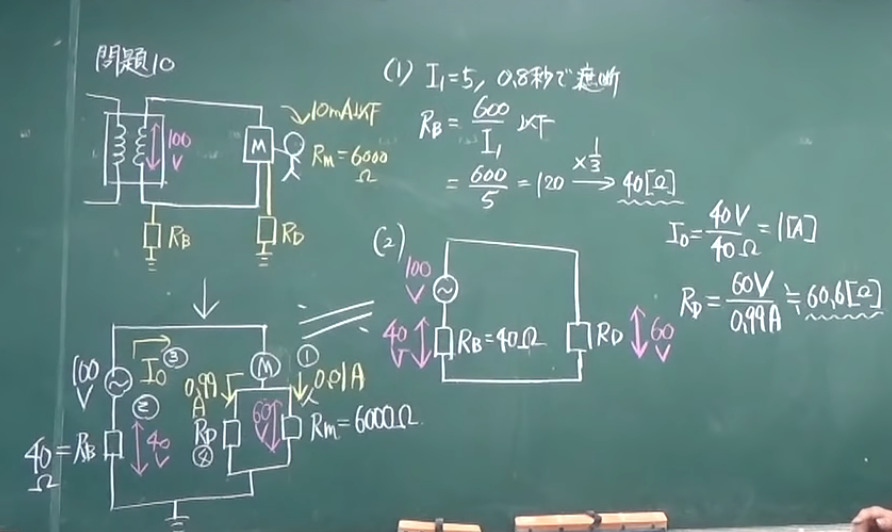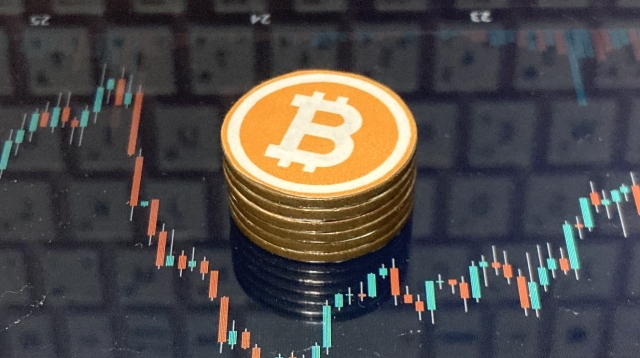[GPT3による要約]
この記事では、ブロックチェーン技術の可能性と、近年いかにブロックチェーンが過大評価されているかについて論じています。著者は、ブロックチェーンはデータの保存・管理方法に革命を起こす可能性を秘めているが、その能力については現実的である必要があると主張しています。この記事では、最近のCryptoKittiesブームの例を挙げ、膨大な取引量のためにイーサリアムのネットワークが停止する事態を引き起こしたことを紹介しています。著者は、ブロックチェーンは有望な技術であるが、期待を抑え、その限界について現実的に考える必要があると結論付けています。
楽しさ、価格、資金調達、ブロックチェーン、アクセシビリティ。期待値を調整する
私たちはブロックチェーンゲームに多くを求めすぎています。
私は開発者として、投資家として、コミュニティメンバーとして、そして生涯ゲームプレイヤーとして、このように言っています。
ここでは、私たちがブロックチェーンゲームに寄せている期待の一部を紹介します。
楽しいゲームであること
トークンの価格上昇 (NFTとエコシステムトークン)。
Kickstarterであること (ゲーム開発者のリスク軽減に貢献すること)
収益の計上をフロントローディングする+プロジェクトの資金を確保する
ブロックチェーン上に構築されること! (フロンティアテクノロジーである)
Play-to-earn(プレイ・トゥ・アーンの略)/ Play-and-earn(プレイ・アンド・アーンの略
DAOs
相互運用性
コンポーザビリティ
Be Accessible! (フリー・トゥー・スタート)
この記事では、ブロックチェーンゲームに関連するいくつかの主要な目標について、1つずつ解剖していきます。
また、これらの目標のうち、特に新しい目標の起源についてもお話しします。
各セクションをボスと考え、結論はレイドの最終ボスだと考えてください。
戦利品は知識であり、親愛なる読者の皆さんには、ブロックチェーン・ゲームが美しい生態系に花開くよう、より合理的な期待をもって、十分な装備を整えていただくことを目的としています。読みながら学べば、学びながら学べます。
楽しさとゲーム
ゲームデザインに関する私のお気に入りの本をいくつか紹介しよう。
[1] ゲームをデザインする。体験をエンジニアリングするためのガイド - Tynan Sylvester
[2] ゲームデザインのための楽しさの理論 - ラファエロ・コスター
[3] The Art of Game Design: A Book of Lenses - ジェシー・シェル
しかし、ゲームデザイン(楽しさのエンジニアリング?)は、ゲームというビジネスの一要素に過ぎない。
ぜひ、ゲームのビジネスについても読んでみてください。
[1] Blood, Sweat, and Pixels: 血と汗とピクセル:ビデオゲーム制作の裏側にある勝利と激動の物語 - ジェイソン・シュレイアー
[2] Press Reset: ビデオゲーム業界の破滅と再生 - ジェイソン・シュライアー
期待値を見直す
良いゲームを作るには、時間がかかるし、経験豊富なチームが必要だ。市場投入が早いゲームもあれば、長期的なアプローチをとるゲームもある。
それらはすべて、Web3の採用や実験において重要な位置を占めています。
トークンの価格上昇
人々はトークンの価格が上昇し続けることを期待しています。
しかし、ここにはもっと切実なものがあり、それはキャリアではなく、天職となる...。
目の前で、30万人の人がSteppingの屋外で、100万人のプレイヤーがAxieの成功に期待している様子を見ながら、私たちはテロップに注目するのです。
私たちが興味を持つべきは、このような素敵なゲームの世界を起動させるメカニズムやモデルを研究することなのです。
なぜなら、これによって複製が可能になるからです。
なぜなら、これによって、プレイヤーが所有するゲーム世界や、(たぶん)メタバースの創造が可能になるからだ。
人々がつながり、友人を作ることができる場所...。
私たちが本当に興味があるのは、ゲームのエコシステムから得られる総合的な効用、つまりゲームがコミュニティのメンバーに提供した価値です。
ブロックチェーンは、プレイヤーが関わるゲームからより多くの効用を引き出すことを可能にすることが期待されています。
時価総額は、その効用を表す代理人に過ぎません。
期待
数字は上がる、上がらなければ捨てるぞと脅す、我々が処理し提示する方法を知っているデータは価格だけである。
仮説:暗号市場やNFTプロジェクトからのスキューモーフィズムによって、私たちは条件付けられた。
人工的に希少化された10,000 NFTプロジェクトがミント価格の何倍もすることに失敗した場合、それは失敗と見なされます。
ゲームプロジェクトでも同じような値動きと供給の圧迫が予想されます。
しかし、NFTプロジェクトの効用は、通常、カントリークラブの会員権やヴェブレン財のように、すぐに明らかになります。カントリークラブの会員権やヴェブレン財のように、他の人が欲しがったり、敬意を払ったりすれば、欲しくなるものなのです。
しかし、仮想通貨(ゲームNFT)の効用は、通常、NFTプロジェクトの効用と類似していません(そうであってはなりません)!
投機家がエコシステムに参入すれば、その数は増えます。投機家が去れば、当然、数は減ります。これはオープンエコノミーの本質です。
問題は、景気が悪くなったときに誰が残るのか、ということです。
さて、メタ(h/t cobie & Wangarian)は変化した。潮が満ちれば、誰がコミュニティもなく、裸で泳いでいたのかが分かるだろう。(h/t: Jon Jordan)
これは、むしろコミュニティのメンバーへのコミュニケーション、そして経済設計の問題であるように思います。
論理的には、これらのNFTとエコシステムトークンの価値は、エコシステムの成長と総価値に比例して高くなるはずです。
理想的には、これらのトークンの価値はエコシステムの成功の遅行指標であるべきで、先行指標ではあってはならないのです。
私たちは、この目標を反映したトークンのメカニズムを設計したいと考えています。
また、これらの目標を反映したECONOMIEをデザインし、どれがこれらの価値を反映し、どれが成長メカニズムに関連する資産であるかをユーザーに明確に伝えなければなりません。
コミュニケーションには、より粒度の細かい語彙が必要です。「NFT」という言葉は、CryptoPunk、Art Block、CryptoRaider、そしてAxieを指します。NFTのクラドジェネシスを捉えるために、新しい用語を導入する必要があるのです。
また、完全希釈評価はミームであることも分かっています。トークノミクスの熟練者は、実際のトラクションとは無関係に人為的にFDVを増加させるようにトークンを設計し、実際にそのFDVを使ってさらなる(無機的な)トラクションを促進させることができます。
短期的(来年くらい)には、価格重視の成長トレンドが続き、プレイヤー・投資家のクリプトクラスがこれらのブロックチェーンゲームの需要サイドの成長に貢献し続けると思います。
しかし、初期から構築してきたプロジェクトがオンラインになるにつれ、ビジョンに基づいたゲームのための資金調達は難しくなり、エキサイティングな新しいゲームがこの投資収益率(ROI)の目標を達成し続けることは、さらに難しくなるでしょう。
数字は常に上がるとは限りません。エクスプロイトが起こる。失敗した実験も起こる。GameFiはリスクマネジメントのゲームです。
戦利品は知識であることを忘れないでください...
Be Kickstarter (Funding of Games)
Level 4 discussed this: free-to-play led to a new era of games. Blockchain does this as well, but with a new paradigm: community-owned games. At minimum, this funding environment helps builders derisk these experiments into new games.1
They provide another avenue for traction, that isn’t necessarily gated by gaming VCs, publishers, or your angel network, and is typically done via NFT sales, or even token distribution (LBPs, LBAs, airdrops, and on).
As a community member, you’re incentivized to apply your games knowledge, and be a part of the game development process.
This is all well and good.
The expectation is related to the above. However, this also means that blockchain games have to engage simultaneously in (1) raising capital, (2) managing their community, and (3) building the game.
Building the game is hard enough!
Additionally, because of the low barrier to entry for game developers, and the relative difficulty of ascertaining intentions of actors, it can be difficult to evaluate the potential success of a blockchain game.
The trouble is: the only thing the average player-investor can go off… is skeumorphisms: both in indicators of growth, as well as in web2 games.
(1) Indicators of growth are inherited from the NFT ‘PFP’ ecosystem: floor price, volume, community members...
(2) We judge games by how they compare to web2 games, or game concepts we’re familiar with.
This leads to (over)-funding of a great deal of projects, many of which will not exist in a few years’ time.
REVISE YOUR EXPECTATIONS.
Even gigantic games by experienced game developers with 20 years of experience, fail. Don’t expect every blockchain game to even be delivered, let alone deliver returns.
See: Press Reset: Ruin and Recovery in the Video Games Industry — Jason Schreier
Be built on the blockchain
Building on new tech is difficult— it always has been.
There are varying degrees of usage: from a light touch of web3 by selling NFTs, to fully on-chain games such as Dark Forest.
Teams will have to make choices about what primitives they’ll use from the varying worlds of DeFi, DAOs, NFT infrastructure, PlayFi and more.
REVISE YOUR EXPECTATIONS.
Where there are difficulties, there are opportunities.
Be accessible
Free-to-play works — it’s brought billion dollar revenue games — primarily because of their accessibility: the fact that anyone can download a game for free, and tell their friends, and access it almost frictionlessly.
Gabe Leydon, the creator of Game of War (as of 2018, grossed 2.8 billion USD in total), speaks about this in detail in a talk titled “Do You Want to Rule the World?”
There are two App Stores that can distribute to two billion people. Everybody knows where to get your game. No one needs to know a dot com. No one needs to go down to GameStop, they just take out their phone, say ‘what’s the name of the game’, go to the App Store, and download it.
If my main feature in the game is a person, then I need to go to the device that they all have: (a mobile phone).”
As investors & players, we expect the same level of accessibility and discoverability from blockchain games.
To say nothing of first-time user experiences, et al…
But blockchain games operate along a spectrum of accessibility: in the above tweet thread, I discuss the tradeoffs between building within the spectrum of web2.1 and web3.0 games.
On one end, you have Thetan Arena and League of Kingdoms. (Free-to-start)
On the other end, you have Crypto Unicorns and Axie Infinity. (Access to gameplay gated by asset ownership)
Guilds help in facilitating this access, but its not nearly as frictionless as Free to Play (one team estimates up to 20 steps to begin playing Axie).
In reality, we understand that the floor price probably shouldn’t be $4,000 to begin playing a game.
But the way we designed our economies, which often are skeumorphic to NFT projects, could make it so that it could be $40, $4,000 or $40,000.
REVISE YOUR EXPECTATIONS.
Recall why blockchain games are promising compared to pure F2P:
Large amounts of $ goes towards building up the game and its ecosystem, rather than funneling in new users
Instead of paying advertisers, why not allow early players, adopters and project supporters the upside?
The punchline then is that blockchain games have to find new avenues for growth.
It will also take time for F2P developers to fully wake up to an alternative model, and also adapt their skillsets in optimization, FTUE, performance marketing, for blockchain game development.
Recall: with the current models, there is often a trade-off. What you gain in accessibility, you may lose, in the other dimensions (and expectations) discussed above.
Be Kickstarter(ゲームの資金調達)
レベル4では、フリー・トゥ・プレイがゲームの新時代をもたらしたと議論しました。ブロックチェーンも同様ですが、新しいパラダイム、つまりコミュニティが所有するゲームによって、これを実現します。少なくとも、この資金調達環境は、ビルダーがこれらの実験を新しいゲームに派生させるのに役立ちます1。
ゲームVCやパブリッシャー、エンジェル・ネットワークによって必ずしも制限されることなく、NFT販売やトークン配布(LBPs、LBAs、Airdropsなど)を通じて行われる牽引のための別の道を提供します。
コミュニティのメンバーとして、ゲームの知識を応用し、ゲーム開発プロセスの一部になることが奨励されます。
これはとても良いことです。
期待されるのは、上記に関連することです。しかし、これはブロックチェーンゲームが、(1)資金調達、(2)コミュニティ運営、(3)ゲーム作りに同時に取り組まなければならないことも意味しています。
ゲームを作るだけでも大変なのに
さらに、ゲーム開発者の参入障壁が低く、行為者の意図を把握することが比較的困難なため、ブロックチェーンゲームの成功の可能性を評価することが難しい場合があります。
困ったことに、一般的なプレイヤー・投資家が判断できるのは、成長指標とWeb2ゲームの両方におけるスキューモーフィズムだけなのである。
(1) 成長の指標は、NFTの「PFP」エコシステムから受け継いだものです:フロア価格、ボリューム、コミュニティメンバー...
(2) Web2ゲームや、私たちがよく知っているゲームコンセプトと比較して、ゲームを判断している。
このため、多くのプロジェクトに(過剰な)資金が投入され、その多くは数年後には存在しなくなる。
期待値を見直す
20年の経験を持つ経験豊富なゲーム開発者による巨大なゲームでさえ、失敗することがあります。すべてのブロックチェーンゲームに、リターンはおろか、配信されることすら期待しないことです。
参照してください。プレス・リセット ビデオゲーム業界における破滅と回復 - ジェイソン・シュレイアー
ブロックチェーン上で構築されること
新しい技術で構築するのは難しい-これまでもそうだった。
NFTの販売による軽いタッチのWeb3から、Dark Forestのような完全なオンチェーンゲームまで、その利用方法は様々です。
チームは、DeFi、DAOs、NFTインフラ、PlayFiなどのさまざまな世界から、どのプリミティブを使うか選択を迫られます。
期待値を見直す
困難があれば、チャンスもある。
アクセスしやすくする
無料プレイが成功し、10億ドルの収益を上げるゲームをもたらしたのは、主にそのアクセスのしやすさにあります。誰でも無料でゲームをダウンロードし、友人に伝え、ほとんど摩擦なくアクセスできるという事実です。
Game of War(2018年現在、総売上28億米ドル)の生みの親であるGabe Leydon氏は、"Do You Want to Rule the World?" と題した講演で、このことについて詳しく語っている。
20億人に配信できるApp Storeは2つある。誰もがあなたのゲームを入手する場所を知っている。誰もドットコムを知る必要はない。GameStopに行く必要もなく、携帯電話を取り出して「このゲームの名前は何だ」と言い、App Storeにアクセスしてダウンロードするだけでいいのです。
ゲームの主役が人であるなら、その人たちが持っているデバイス(携帯電話)に行く必要があるんです。(携帯電話)」。
投資家&プレイヤーとして、私たちはブロックチェーンゲームに同じレベルのアクセス性と発見性を期待します。
初めてのユーザー体験などは言うに及ばず...。
しかし、ブロックチェーンゲームはアクセシビリティのスペクトラムに沿って動作します。上記のツイートスレッドで、私はweb2.1ゲームとweb3.0ゲームのスペクトラムの中で構築することのトレードオフを議論しています。
一方の端には、Thetan ArenaとLeague of Kingdomsがあります。(無料で始められる)
もう一方は、Crypto UnicornsとAxie Infinityです。(ゲームプレイへのアクセスは、資産所有によって制限されます。)
ギルドはこのアクセスを促進するのに役立ちますが、Free to Playほど摩擦がありません(あるチームは、Axieを始めるのに最大で20ステップかかると見積もっています)。
現実には、ゲームを始めるのにフロアプライスが4,000ドルであるべきではないことは、私たちも理解しています。
しかし、私たちの経済設計の方法は、しばしばNFTプロジェクトに対してスキマがあるため、40ドル、4000ドル、4万ドルのいずれかにすることが可能でした。
期待を改める
純粋なF2Pと比較して、ブロックチェーンゲームが有望である理由を思い出してください。
新規ユーザーを取り込むのではなく、ゲームとそのエコシステムを構築するために多額の資金が使われる。
広告主にお金を払う代わりに、初期のプレイヤー、採用者、プロジェクト支援者にアップサイドを認めてはどうでしょうか?
つまり、ブロックチェーンゲームは、新しい成長手段を見つけなければならないのです。
また、F2P開発者が代替モデルに完全に目覚め、最適化、FTUE、パフォーマンスマーケティングなどのスキルセットをブロックチェーンゲーム開発に適応させるには、時間がかかると思われます。
思い出してください:現在のモデルでは、しばしばトレードオフが発生します。アクセシビリティで得たものは、上で述べた他の次元(と期待)で失うかもしれません。
Why even have blockchain in games?
So if we can’t fulfil these expectations, what are we doing this for?
Recall: we are seeing if blockchain can revolutionize the business of games (like Free-To-Play did). Blockchain gaming can make vision-based games possible. They present alternative growth mechanisms, that can potentially scale to millions of users without depending on platforms. We’ve only touched the tip of the iceberg here: under an F2P funding paradigm, Stardew Valley would not be funded.
Blockchain also can allow for new types of games — new mechanics, and gameplay. Axie unlocked the management sim. Gray & shadow markets in open economy games like Crypto Unicorns become core gameplay.
DAOs open up the potential for a new era of community-owned and operated games. We have the potential for remixable and composability of game mechanics (see: web3 games, and Warcraft III maps / Roblox). We have the potential to encourage, and granularly award value to a whole class of user-generated content (see: DotA 2).
We are at the start of a new era.
It took 2 years to go from Fruit Ninja (2010) to Clash of Clans (2012). There will be a lot of experimentation in between.
Conclusion
Games teams, as they experiment in this new paradigm, in their current form, can fulfil 1, 2, or even 3 of those expectations.
Different game products will be tailored towards fulfilling these expectations, at varying levels & degrees.
We need to adjust our base rate — and know that most games fail (see: Press Reset, or this sobering Wikipedia page). (P.S: hat tip to Sebastian Park & Nico Vereecke, in the upcoming Metacast, discuss exactly this.)
There are many games that we’ve got a chance to work with & invest in, which are pioneering brand new models that could address one, many, or even all of the above issues.
Those that succeed may take months, years to come to fruition, and prove out their hypotheses.
There is alpha in paying close attention… and remember to have fun along the way.
1
Realistically, a game is never fully new. It’s typically 90% building on other games, and 10% innovation. You might witness an Archaic Revival, bringing back mechanics that worked really well in old games (see: Stardew Valley & Harvest Moon). The ‘remastered’ trend is slightly different to this Archaic Revival.
なぜゲームにブロックチェーンが必要なのか?
では、これらの期待に応えられないのであれば、何のためにこれをやっているのでしょうか?
思い出してください:私たちは、ブロックチェーンがゲームのビジネスに革命を起こせるかどうかを見ています(Free-To-Playがそうだったように)。ブロックチェーンゲームは、ビジョンに基づいたゲームを可能にすることができます。プラットフォームに依存することなく、何百万人ものユーザーにスケールする可能性のある、代替的な成長メカニズムを提示します。F2Pの資金調達パラダイムのもとでは、Stardew Valleyは資金調達されなかったでしょう。
ブロックチェーンは、新しいタイプのゲーム、つまり新しいメカニズムやゲームプレイを可能にすることもできます。Axieは経営シムをアンロックした。Crypto Unicornsのようなオープンエコノミーゲームにおけるグレーマーケットとシャドーマーケットは、コアなゲームプレイになります。
DAOは、コミュニティが所有し運営する新しい時代のゲームの可能性を切り開きます。私たちは、ゲームメカニクスのリミックスとコンポーザビリティの可能性を持っています(参照:Web3ゲーム、Warcraft IIIのマップ/ Roblox)。ユーザー生成コンテンツ全体を奨励し、きめ細かく価値を与える可能性がある(DotA 2を参照)。
私たちは、新しい時代の始まりにいるのです。
フルーツニンジャ(2010年)からクラッシュ・オブ・クラン(2012年)に至るまで2年かかりました。この間、多くの実験が行われるでしょう。
まとめ
ゲームチームは、この新しいパラダイムの中で実験しながら、現在の形で、これらの期待の1つ、2つ、あるいは3つを満たすことができます。
ゲーム製品によっては、レベルや程度の差はあれ、これらの期待を満たすように調整されるでしょう。
そして、ほとんどのゲームが失敗していることを知る必要がある(「Press Reset」や、Wikipediaの痛烈なページを参照)。(追伸:Sebastian ParkとNico Vereeckeが、今度のMetacastで、まさにこのことを論じていて脱帽です)。
私たちが一緒に仕事をしたり、投資したりする機会のあるゲームの中には、上記の問題の1つ、多く、あるいはすべてに対処できるような、まったく新しいモデルを開拓しているものがたくさんあります。
成功しても、それが実現し、仮説が証明されるまでには、数ヶ月から数年かかるかもしれません。
そして、その過程での楽しみを忘れないでください。
1
現実的に、ゲームに完全な新しさはない。一般的には、90%が他のゲームをベースにしており、10%が革新的である。昔のゲームによくあった仕組みを復活させる「アルカイックリバイバル」を目撃することもあるかもしれない(Stardew ValleyやHarvest Moonなど)。リマスター」のトレンドは、この「アルカイックリバイバル」とは少し異なる。
おすすめ記事
- 【英語学習 暗号通貨、NFT、Web3.0】レベル1:Metaversusの紹介
- 【英語学習 暗号通貨、NFT、Web3.0】レベル2:ゲームのマネタイズ、Play-and-Earnの約束とインセンティブの調和
- 【英語学習 暗号通貨、NFT、Web3.0】レベル3:Diablo II」、ゲームエコノミーデザインの教訓、命名法の重要性
- 【英語学習 暗号通貨、NFT、Web3.0】レベル4:資金調達、自由、フリーガイ。クリエイターエコノミー
- 【英語学習 暗号通貨、NFT、Web3.0】レベル5:アクシーズ スムースラブポーションマシン、&プレイ&アーンの社会契約書
- 【英語学習 暗号通貨、NFT、Web3.0】レベル6:コンフリクトとフリクションがゲームプレイを促進する方法。学習、デジタル希少価値、物語性





